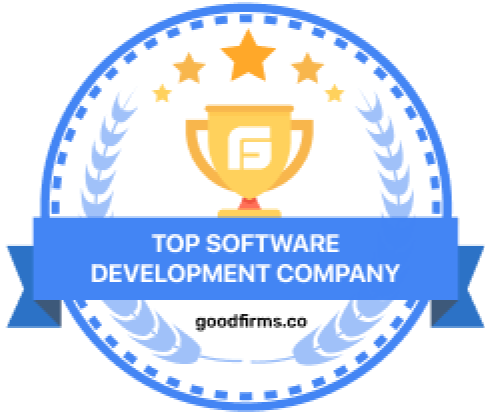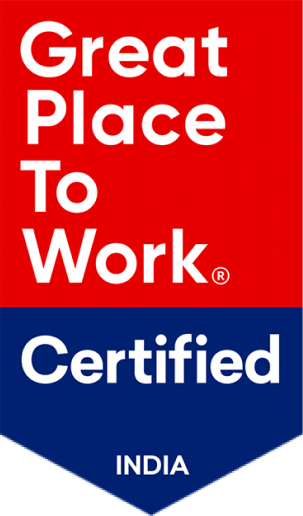ServiceNow is a robust platform that streamlines enterprise workflows by integrating various IT and business processes. With its extensive capabilities, organizations can leverage ServiceNow to connect different systems, automate operations, and enhance productivity. One of the platform’s standout features is its ability to integrate with various third-party applications, enabling seamless data flow and process synchronization. But, do you know the types of ServiceNow integrations? Let’s dive deep into the key integration modules and their significance.
Types of ServiceNow Integrations:
1. IT Service Management (ITSM) Integration
IT Service Management (ITSM) is at the heart of ServiceNow, helping organizations manage incidents, requests, problems, and changes efficiently. Integrating ITSM with external systems ensures a smooth service delivery experience across different platforms.
Key Features of ITSM Integration:
- Incident and Request Management: Connects with external ticketing systems like Jira and Zendesk for seamless issue tracking and resolution.
- Change Management: Automates change request approvals across IT and business systems to minimize disruptions.
- AI and Chatbot Integration: Enhances IT support with AI-driven virtual assistants like Microsoft Teams or Slack.
- Automated Workflows: Syncs with HR, finance, and other departments for improved collaboration.
- Reporting and Analytics: Pulls real-time data from monitoring tools for better decision-making.
Example Use Case:
A leading financial institution integrated ServiceNow ITSM with its existing IT monitoring tools like Splunk and SolarWinds. This automation reduced incident resolution time and enhanced customer satisfaction.
2. IT Operations Management (ITOM) Integration
ITOM focuses on monitoring and managing IT infrastructure, ensuring system stability and performance. Integrating ITOM with third-party platforms helps organizations gain better visibility into their IT landscape.
Key Features of ITOM Integration:
- Event Correlation and Management: Consolidates event data from monitoring tools like Nagios and Datadog.
- Cloud Management Integration: Connects with AWS, Azure, and Google Cloud for infrastructure automation.
- Configuration and Discovery: Automatically detects and updates configuration items (CIs) in the CMDB.
- Predictive Analytics: Uses AI-driven insights to prevent system failures.
- Incident Auto-Resolution: Automatically creates and resolves incidents based on real-time alerts.
Example Use Case:
A global e-commerce company integrated ServiceNow ITOM with AWS and Azure to manage its cloud infrastructure. This helped automate configuration updates and reduced cloud downtime.
3. IT Asset Management (ITAM) Integration
ITAM ensures organizations can track, manage, and optimize IT assets throughout their lifecycle. Integrating ITAM with external systems maximizes asset utilization and reduces costs.
Key Features of ITAM Integration:
- Software Asset Management (SAM): Connects with vendors like Microsoft, Adobe, and Oracle to track software licenses.
- Hardware Asset Management (HAM): Integrates with procurement systems for automated inventory tracking.
- Contract and Vendor Management: Syncs with ERP systems for seamless contract management.
- Lifecycle Automation: Automates asset tracking from procurement to retirement.
- Financial Reporting: Provides insights into asset utilization and cost management.
Example Use Case:
A healthcare company integrated ServiceNow ITAM with SAP ERP to manage its IT assets efficiently. This improved asset visibility and reduced unnecessary software purchases.
4. IT Business Management (ITBM) Integration
ITBM aligns IT initiatives with business goals, ensuring efficient project and financial management. Integrating ITBM with ServiceNow optimizes resource allocation and project tracking.
Key Features of ITBM Integration:
- Project and Portfolio Management (PPM): Integrates with Jira and Trello for streamlined project tracking.
- Resource Management: Syncs with HR systems to allocate skilled professionals to projects.
- Financial Management: Connects with accounting tools like QuickBooks and SAP for cost tracking.
- Agile Development: Enables seamless integration with DevOps tools.
- Time Tracking & Billing: Automates time logs and invoicing.
Example Use Case:
A telecom giant integrated ServiceNow ITBM with Jira to improve project visibility and resource allocation, leading to an increase in efficiency.
5. Human Resources Service Delivery (HRSD) Integration
HRSD streamlines HR processes, from onboarding to employee requests. Integrating HRSD with external platforms ensures seamless employee experiences.
Key Features of HRSD Integration:
- Employee Onboarding & Offboarding: Syncs with Workday, SAP, and ADP for automated processes.
- Case and Knowledge Management: Provides AI-powered self-service portals.
- HR Chatbots: Enhances employee interactions via Slack and Microsoft Teams.
- Payroll and Benefits Integration: Connects with payroll providers for automated salary processing.
- Performance Management: Syncs with performance tracking tools.
Example Use Case:
A Fortune 500 company integrated ServiceNow HRSD with Workday, reducing onboarding time and enhancing employee satisfaction.
6. Configuration Management Database (CMDB) Integration
CMDB maintains an accurate record of IT assets and their relationships. Integrating CMDB ensures better visibility and compliance.
Key Features of CMDB Integration:
- Automated Asset Discovery: Syncs with ITOM tools to update configurations in real-time.
- Change Impact Analysis: Predicts issues before making IT changes.
- Risk and Compliance Tracking: Integrates with GRC tools for policy enforcement.
- Dependency Mapping: Shows relationships between IT components.
- Reporting & Auditing: Provides compliance reports.
Example Use Case:
A retail company integrated ServiceNow CMDB with ITOM, improving asset tracking and reducing unplanned outages.
7. Security Operations (SecOps) Integration
SecOps enhances cybersecurity by integrating security tools with IT workflows. This automation ensures rapid threat response.
Key Features of SecOps Integration:
- Threat Intelligence: Connects with SIEM tools like Splunk.
- Automated Incident Response: Triggers automated security workflows.
- Vulnerability Management: Identifies and remediates risks.
- Compliance Enforcement: Ensures adherence to security policies.
- Real-Time Analytics: Provides insights into security trends.
Example Use Case:
A bank integrated ServiceNow SecOps with its SIEM solution, reducing cyber threat response time.
8. DevOps Integration
ServiceNow DevOps bridges the gap between development and IT operations, automating deployments and ensuring governance.
Key Features of DevOps Integration:
- CI/CD Automation: Syncs with Jenkins, GitHub, and GitLab.
- Change Governance: Automates change approvals.
- Security & Compliance: Integrates with vulnerability management tools.
- Monitoring & Logging: Connects with Datadog and Splunk.
- Predictive Analytics: Uses AI to optimize releases.
Example Use Case:
A SaaS company integrated ServiceNow DevOps, improving release cycles and enhancing compliance.
9. Governance, Risk, and Compliance (GRC) Integration
Governance, Risk, and Compliance (GRC) is essential for organizations to manage risks, enforce policies, and ensure regulatory compliance. ServiceNow GRC integration helps businesses automate compliance management, streamline risk assessments, and enhance overall security governance. By integrating with external security, finance, and auditing tools, organizations can proactively identify risks and take necessary actions to mitigate them.
Key Features of GRC Integration:
- Automated Risk Management: Integrates with risk assessment platforms to provide real-time risk insights and automated mitigation strategies.
- Regulatory Compliance Monitoring: Connects with compliance databases to ensure adherence to standards like GDPR, HIPAA, ISO 27001, and SOC 2.
- Audit & Policy Management: Syncs with external audit systems to track policy changes, streamline reporting, and ensure regulatory alignment.
- Third-Party Risk Assessment: Automates vendor risk assessments by integrating with supplier management tools.
- Security & Incident Response: Enhances compliance by linking with security tools like SIEM and vulnerability management platforms.
Real-World Use Case:
A multinational corporation integrated ServiceNow GRC with its existing risk management framework, automating compliance tracking and reducing audit preparation time. This streamlined approach enabled proactive risk mitigation and enhanced security posture across the organization.
Conclusion
ServiceNow offers multiple integration types, each playing a crucial role in streamlining operations. Whether it’s ITSM, ITOM, ITAM, or HRSD, these integrations enhance efficiency and drive business success. By leveraging ServiceNow’s powerful integration capabilities, businesses can improve automation, security, and overall performance.
Ready to transform your enterprise with seamless ServiceNow integrations? Let’s talk! Connect with us today to unlock automation, security, and efficiency at scale.

Start a Project with Ajackus





























